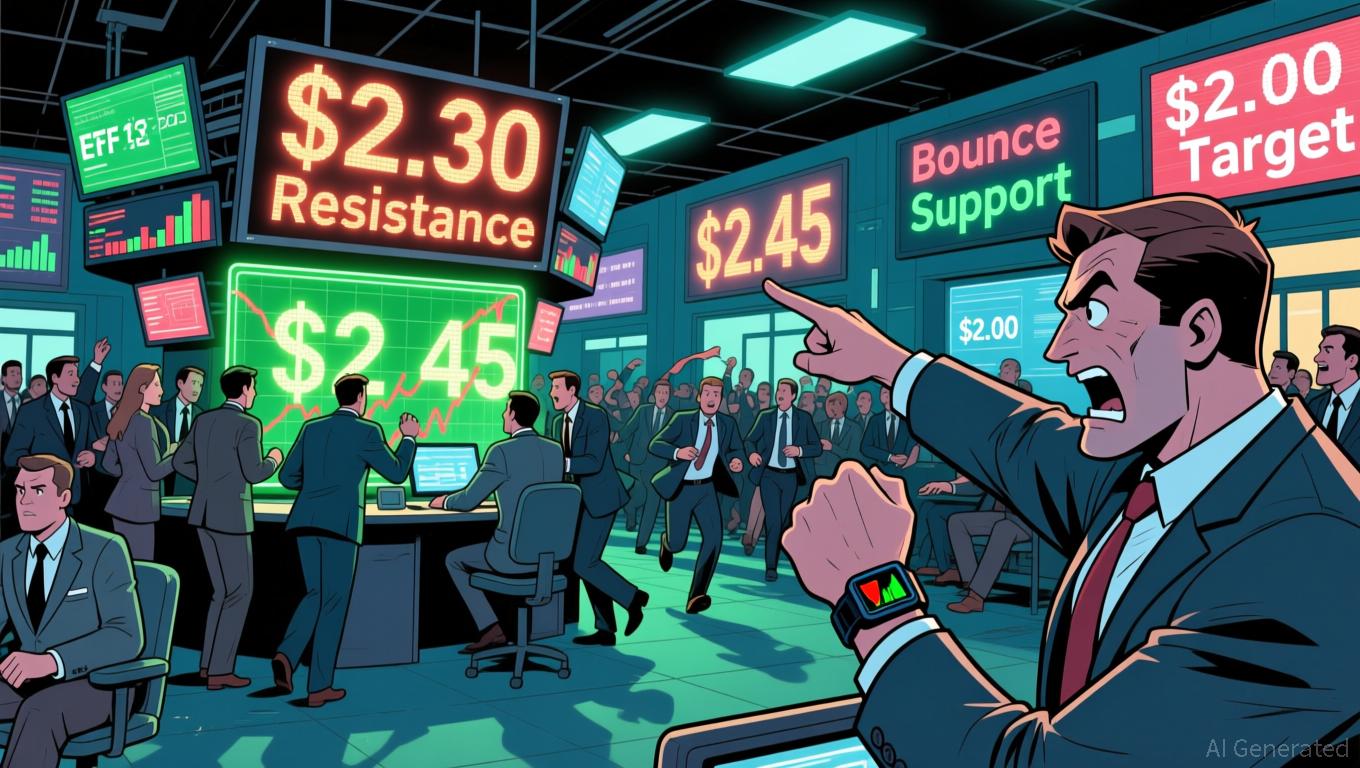News>
XRP News Today: XRP's Role in International Transactions Strengthens as ETFs Spark Institutional Movement
Bitget-RWA2025/11/26 23:04
By: Bitget-RWA
- XRP's price nears $2.30 threshold amid ETF-driven institutional interest, with Canary Capital's XRPC ETF attracting $13M net inflows despite broader crypto outflows. - Technical analysis highlights fragile support at $2.03 and critical resistance at $2.45, with breakdowns risking a slide to $1.50 while breakouts could trigger bullish momentum. - XRP's real-world utility gains traction via SWIFT GPI integration, demonstrating cross-border payment efficiency that differentiates it from speculative altcoins
XRP's price is currently at a crucial point as it approaches the significant $2.30 mark, with recent trading activity and institutional moves influencing its short-term prospects. The debut of the
Canary Capital XRP ETF
(XRPC) on Nov. 13 represented a major development, reaching $26.5 million in trading volume
and $13 million in net inflows by its fifth trading day. This stands in stark contrast to the outflows seen in Bitcoin
ETFs, with BlackRock's iShares Bitcoin Trust experiencing a record $523 million withdrawal on Nov. 19 based on available data
. While the XRPC
ETF's performance is more modest compared to its $58.5 million opening day, it still reflects rising interest in XRP-focused investment products amid ongoing crypto market turbulence. Even with this institutional momentum, XRP's price has
found it difficult to maintain levels above $2.10
, declining for seven straight days between Nov. 11 and 17. Blockchain data indicates the asset could be entering an attractive buying range, with Santiment reporting
that XRP's MVRV ratio and a drop in active wallets may point to a possible recovery. Still, technical indicators highlight the vulnerability of current support. If prices fall below $2.03, a sharper decline toward $1.50 could follow, while a steady move above $2.30 would signal renewed bullish strength 
according to analysis
. Surpassing the $2.45 barrier could mark a turning point in market sentiment, as noted by on-chain data provider BOSSMD
. XRP's practical applications are also drawing more attention.
A recent SWIFT GPI pilot
, which brought together XRP
and the R3 Corda Settler, highlighted its potential as a cross-border settlement currency. This initiative, conducted under strict regulatory oversight, demonstrated XRP's capacity to improve settlement speed and transparency—qualities that could encourage institutional use beyond mere speculation. Experts point out
that such real-world applications could set XRP apart from other altcoins, making it a viable option for financial infrastructure. There is still no consensus among traders about XRP's immediate direction.
An optimistic outlook sees
the token rebounding to $2.60 if the $2.03 support holds, with retests of trendlines and possible new yearly highs as important milestones. On the other hand, a drop below $2.00 could send XRP down to $1.78, especially if broader economic conditions deteriorate. While ETF inflows are a positive sign, they may not be enough to counteract larger market forces. For instance, Grayscale's GXRP ETF did not
trigger
notable price changes after its launch, highlighting the need for ongoing institutional interest. Looking forward, XRP's fate will depend on three main factors: whether it can break through the $2.30–$2.45 resistance range, the rate of ETF inflows, and Bitcoin's overall performance.
A synchronized rally among major cryptocurrencies
could boost XRP's liquidity, while continued weakness in Bitcoin might limit its gains. As of Nov. 25, XRP is trading at $2.19, balancing between optimism from accumulation and resistance from established supply zones according to market analysis
. The next few weeks will be pivotal in determining if XRP can evolve from a speculative asset into a foundational part of the global financial landscape. Disclaimer: The content of this article solely reflects the author's opinion and does not represent the platform in any capacity. This article is not intended to serve as a reference for making investment decisions.
Lock now!
You may also like
Crypto prices
MoreBecome a trader now?A welcome pack worth 6200 USDT for new users!
Sign up now